Art and Cows
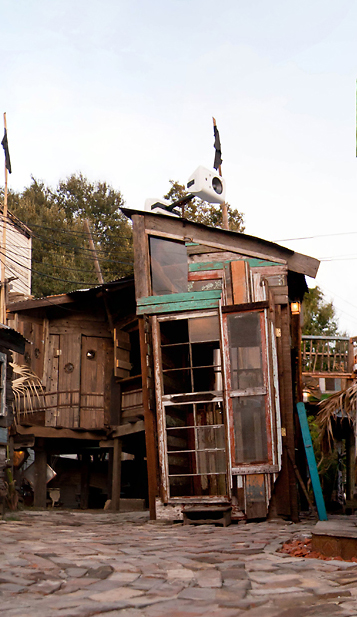
art for art's sake
Sometimes you just have to follow a divine impulse of delight and forget what anyone would think.
Jane Urquhart's book, Away contains a passage that raises questions about the production/creation of art. Here is an excerpt from the book: "They had come to a small clearing in the woods. In it there was a shanty with a tin stovepipe, a modest-sized workshed painted bright orange, and a yard filled with logs, planks, sheets of tin, and sawhorses. Above the workshop a sign proclaimed, THOMAS J. DOHERTY: SIGN PAINTER AND BARN EMBELLISHER. But most surprising, the surrounding area was scattered with a multi-colored collection of wind machines that clattered and whirred in the breeze and miniature mechanical figures churning butter, milking cows, running on the spot, riding horses, some solitary souls making ridiculous gestures with their arms or kicking wildly with their legs. Rags of various colors flapped frantically from wires supported by stakes at one end and attached by hooks to either the house or the shop at the other, causing both the surrounding forest and the clearing to look as if they had been torn to shreds. The walls of both buildings were covered with horseshoes, except those of the front and the side of the workshop, which were dressed with paintings of cows, rendered in profile and standing in a series of improbable landscapes.
"Those are what he does" said the girl, pointing to the painted cow. "Big on barns for money. He's doing one today."
"And these...?" asked Eileen. pointing to the frenetic wooden figures.
"Those he does," said Molly Doherty, "for art."
With his multi-million dollar price tags, the artist Damien Hirst has managed to change pickled cows into cash cows. Is it art or is it something else? Is he playing to the shock value of queasy cow entrails or could this be the expression of a deeply felt artistic impulse? At a net worth of over $360M, Hirst is reputed to be the wealthiest living artist today. Thanks to the folks who love his work. People desire to have a bisected cow in the living room. Or are they buying for another reason?
Mother and Child (Divided)
cow and calf sliced in cross-sections
pickled in formaldehyde
Damien Hurst
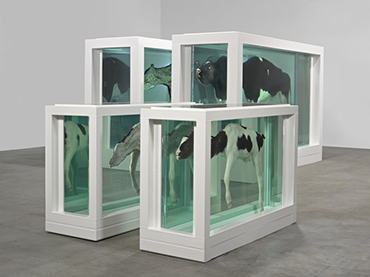
Wikipedia defines selling out as a common idiomatic pejorative expression for the compromising of a person's integrity or authenticity in exchange for personal monetary gain. In terms of art, selling out is associated with attempts to tailor material to a mainstream or commercial audience. The notable critic, Clement Greenberg writes about the additional factor of uninformed buying by wealthy collectors forcing prices up and quality down. According to Greenberg, the 'success' this would bring was symptomatic of the general decay in culture. And who can say what manipulations occur in the upper prada strata where the air is thin and the politics are thick.
Remarkably, Sotheby's has been known to put young newbie artists on the block, artists with exhibition histories short as a blink with suggested starting bids of $90,000.
The young artist Zachary Armstrong was recently on the block at Sotheby's with a suggested starting bid of $10,000. It was a gamble on Sotheby's part but let's say the bidding goes well and the piece sells for triple the suggested starting bid and ten times the price of his previously selling work. Would Armstrong whose work was generated from the dinosaur graphics on his childhood bed-sheets subsequently consider painting something completely different, defying commercial success and even moving to a different genre? What if deep down he discovers an affinity to the painted landscape as an exciting vehicle for color and space and secretly, passionately desires to rival the prolific Turner. What happens when an artist’s inclinations towards his work conflict with his ability to sell and keep making it?
Untitled 2014
Zachary Armstrong
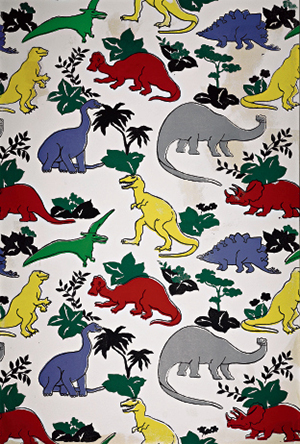
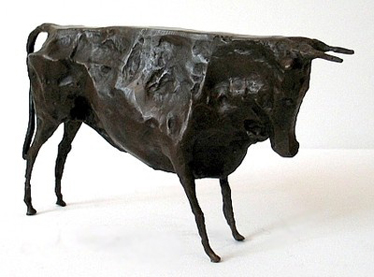
El Toro
bronze sculpture
Pablo Picasso
How does one resist compromising one’s creative ideals when straining to meet the practical essentials of survival? An uncompromising answer comes from one of the greatest creators humanity has ever known. The photographer Brassaï who photographed Picasso's sculptures later published the book Conversations with Picasso. Picasso is said to quote Matisse who had once told him “You have to be stronger than your gifts to protect them.” But Picasso goes on to say: “Well, success is an important thing! It’s often been said that an artist ought to work for himself, for the “love of art,” that he ought to have contempt for success. Untrue! An artist needs success. And not only to live off it, but especially to produce his body of work. ….. But where is it written that success must always go to those who cater to the public’s taste? For myself, I wanted to prove that you can have success in spite of everyone, without compromise.“
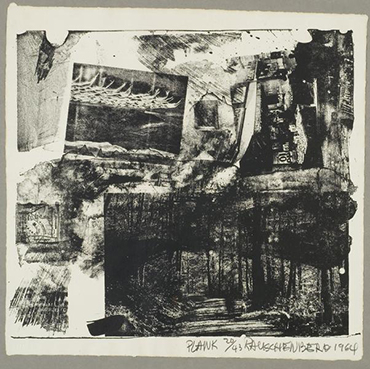
Plank
Drawings for Dante’s Inferno
Robert Rauschenberg
Paolo Barozzi's essay on Rauschenberg's images of the inferno concludes that the images give form to the artist's fear of success that he felt coming too soon, as if to ask whether a success too easy to achieve could come from a misunderstanding of his art. Rauschenberg's images were images of his personal inferno, which expresses the artist's fear that the world could entrap and pin him down in a role that he would inevitably have to accept.
So we have authentic expression on one hand coupled with the fear of being pigeon-holed, and the necessity of groceries on the table or a porsche in the garage on the other hand. For artists, reconciliation of these two often conflicting pressures is not easy. A divided mind is conducive to stress and sometimes madness. If you are a purist, art is created solely for the purpose of expression and must not be influenced by any outside force. Inspiration must come from within and any other influence or purpose behind the creation dilutes or contaminates its purpose. If you prefer the smell of cash to that of turpentine, what you produce is no longer pure art, but rather has sunk to the level of 'commercial art' at best. But then you have the porsche in the garage so you probably won't feel too lousy.
Ultimately it is up to public opinion to determine the authenticity and meaningfulness of an artwork. Consider Tracey Emin's sculpture, My Bed consisting of the artist’s bed with bedroom objects in an abject state including but not limited to, condoms, stained sheets, vodka bottles, menstrual stained underwear, and other detritus. The piece caused much shock and controversy. But in the end public opinion seemed to conclude that it was somehow unworthy of consideration as art. This bad girl confessional piece seemed to be too much for the public and critics who stated it merely reflected Emin’s “sluttish personality.”
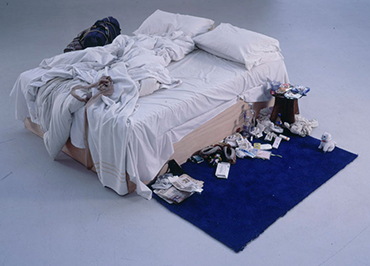
A line from a 70's tune plays in my head: "Just what you want to be you will be in the end."

See more blog posts by Canadian artist Wendy Skog.
wendy skog abstract art studio copyright 2022 all rights reserved